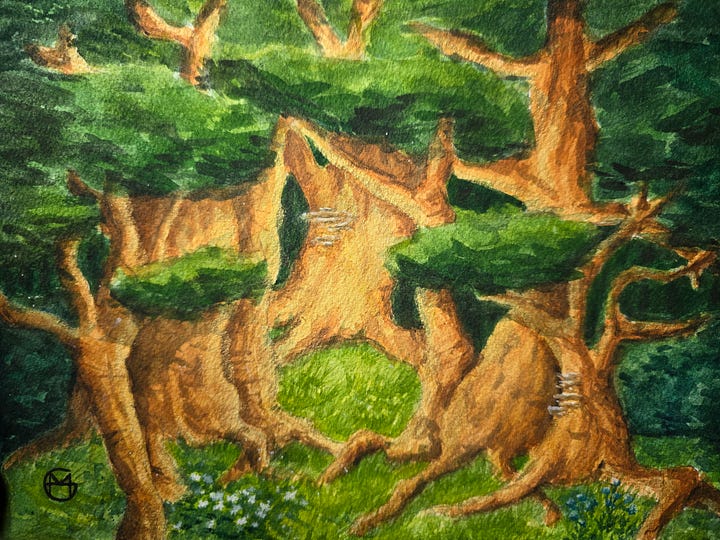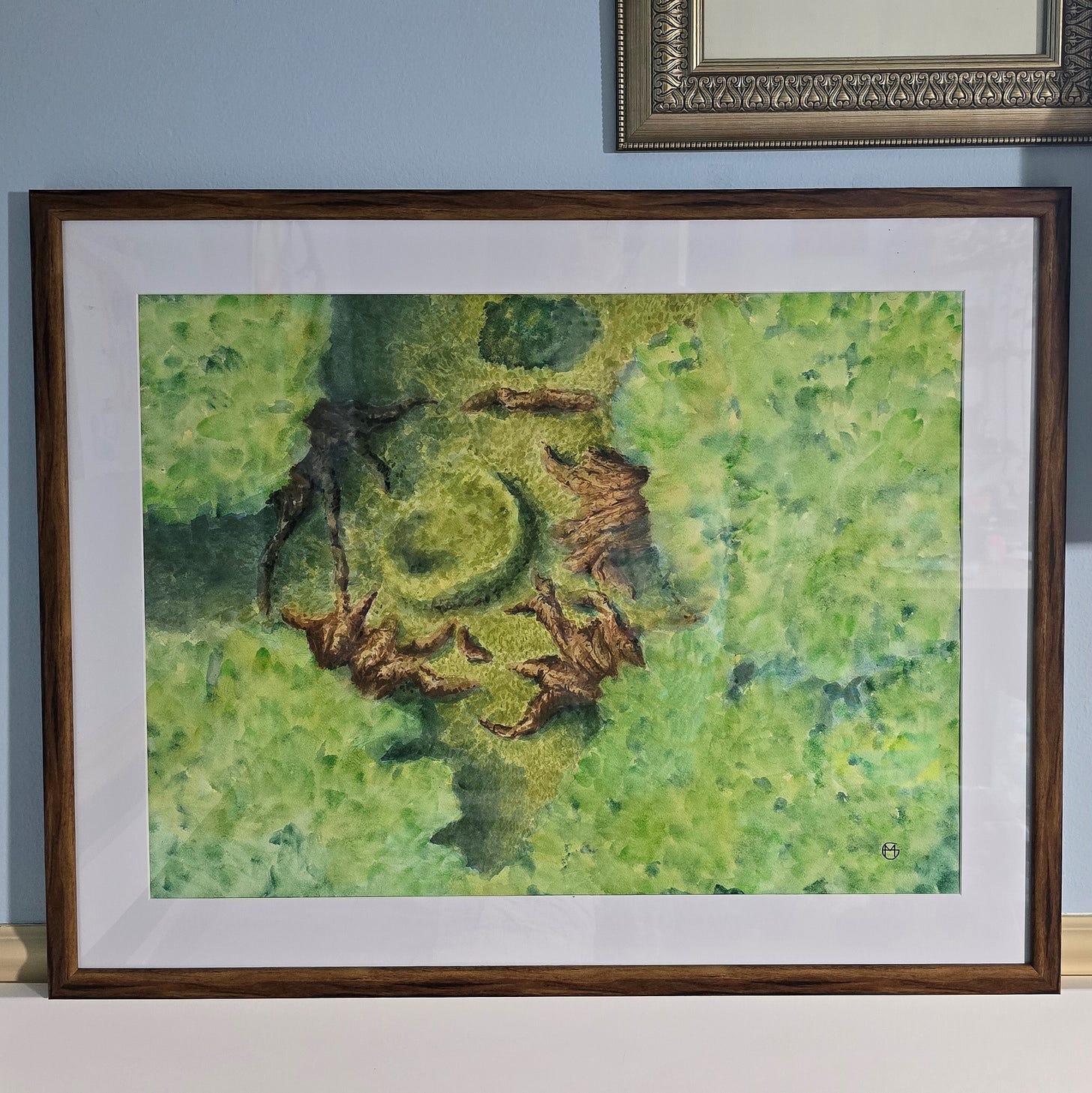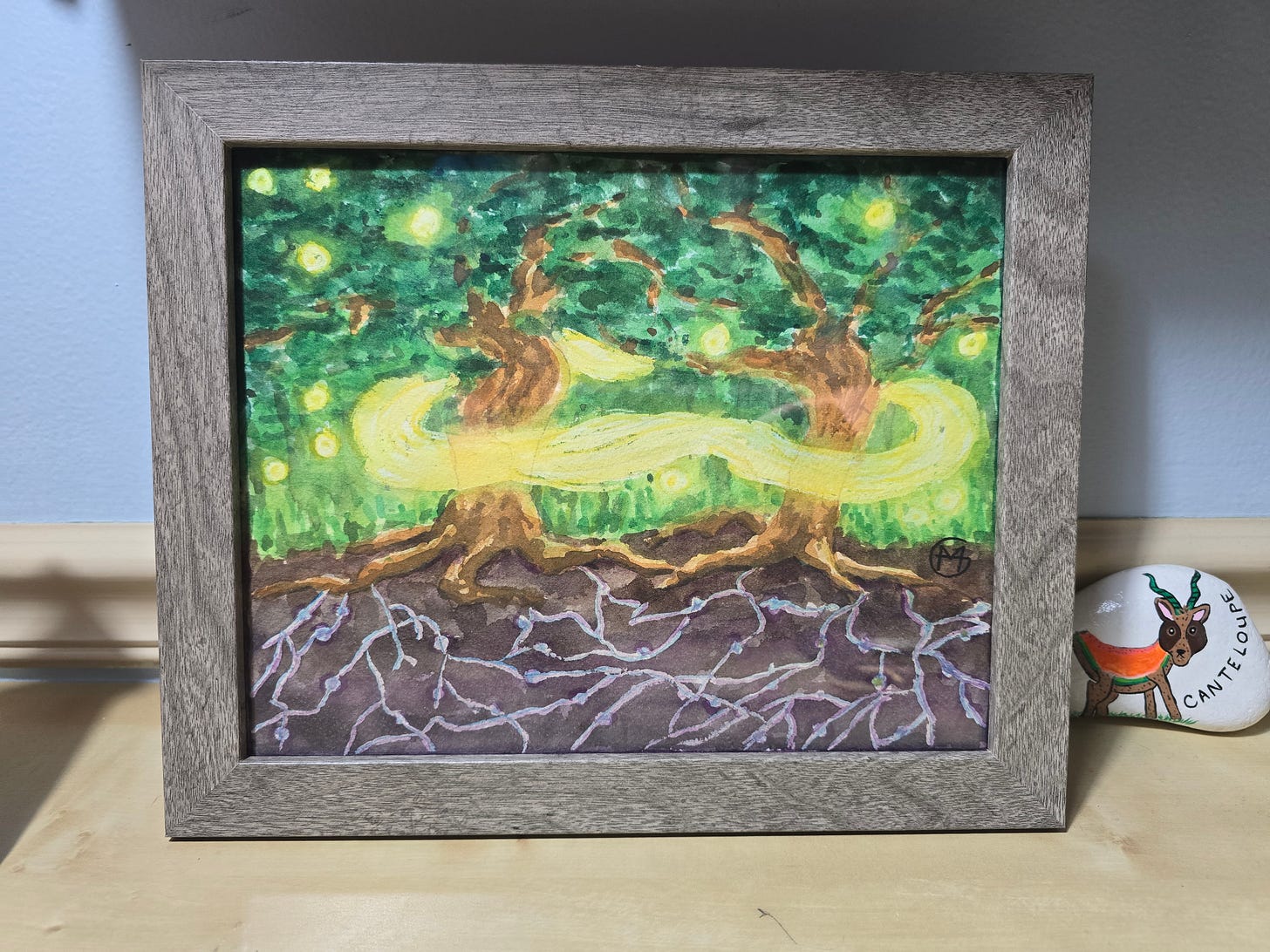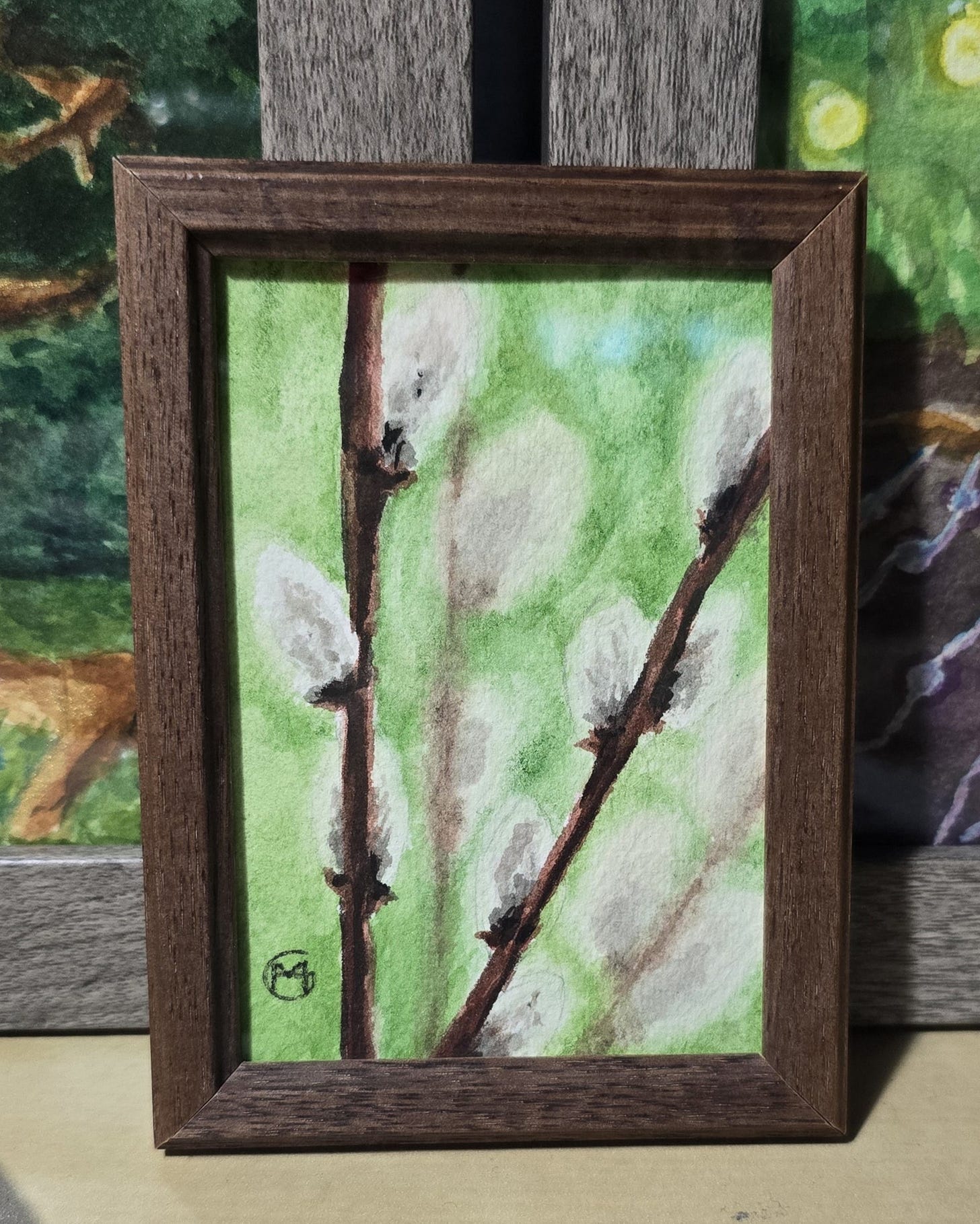The Hidden Life of Trees
A painting series of being rooted, connected, and embraced by the forest




In late summer, I finished a painting series called “The Hidden Life of Trees,” inspired by Peter Wohlleben's book of the same name.
The book is a fascinating exploration of trees' complex ecosystems and communication networks. It reveals how trees form communities and care for each other, providing beautiful insights into their life that will leave you in awe.
Lessons from the Forest
We often use phrases like 'survival of the fittest' to justify competitive or selfish behaviors. But does nature truly reflect only these values? Far from it. Nature is as much about cooperation and mutual aid as it is about competition. From the symbiotic relationships of ants and fungi to humpback whales protecting their young, the natural world thrives on collaboration.
My first artwork in the series, Roots of Unity, explores these themes of interconnectedness. The book, “The Hidden Life of Trees,” reveals how trees in ancient forests support each other through a network of roots and mycelium, sharing nutrients and information, much like a community looks after its members.
This isn’t just a network. It's a sophisticated economy of care in which communal well-being ensures the forest's survival. In the book's first chapter, Wohlleben describes a stump he found under moss cover. He first thought it dead but discovered that the surrounding trees kept it alive to keep the root web intact. This distributes resources where they are needed most and protects and enhances the collective.
This is what I depicted in Roots of Unity from an overhead perspective.
It occurred to me that humans have the capacity to choose which aspects of nature to emulate. We have the power to adopt these models of mutual aid and empathy in forming our societies. We can move beyond the 'survival of the fittest' mindset to champion a society that values solidarity and shared prosperity.
Through Roots of Unity, I invite you to see not only the beauty of the natural world but also the powerful lessons it holds about how we might live together. Let's embrace these lessons, fostering an interconnected and nurturing society.
The Interconnected World Beneath
The second painting, “Song of Trees,” is based on the second chapter of the book. This chapter has been a beautiful revelation, shedding light on how trees communicate, protect, and even collaborate in ways we’re only beginning to understand.
Did you know trees can identify pests by saliva, make their leaves bitter to ward off herbivores, and even call on beneficial insects for help? They communicate through the air and underground through a network of roots and mycelium, Wohlleben called the "Wood Wide Web." Even competitors are part of this conversation, highlighting the deep interconnectedness of all life.
This challenges the idea that nature is purely competitive, suggesting instead a world where collaboration is key—even among rivals. This perspective resonates deeply with my belief in the power of community and the unseen bonds that unite us all.
My painting, "The Song of Trees," portrays two trees almost dancing together. Their roots are intertwined in this magical network, and a swirling, glowing cloud of connection connects them. Firefly-like orbs illuminate their branches, representing the life and energy that flows within this sacred web of communication.
The Strength of Community Over Isolation
In the third chapter, "Social Security," Wohlleben challenges the common belief that trees growing too close together is terrible. He reveals that closeness is a blessing, not a curse, especially among trees of the same species. In a healthy forest, trees support each other by synchronizing their growth and sharing resources like water and nutrients. They create a stable, moist, dim ecosystem where everyone thrives together.
As I painted my third artwork of the series, "The Embrace of the Forest," inspired by the community of trees described, interweaving their branches like the embrace of a nurturing family, I couldn’t help but think about how their story mirrors our own. Just as a tree can only be as strong as the forest around it, our well-being, too, depends on the communities we build and sustain. This painting is a visual reminder that our true strength lies not in standing alone but in leaning on each other.
This perspective, though, challenges the often-held belief in rugged individualism. Nature teaches us that interdependence is not a weakness but a profound source of strength. When we come together like the trees, we create an environment where we all can flourish.
Redefining Strength in Love and Nature
The fourth and last painting in the series, I call “Softness is Manly.” At first, this piece was inspired by the 'Love' chapter in “The Hidden Life of Trees,” where trees synchronize their bloom times and connect with each other to ensure the next generation thrives. These delicate willow catkins I painted are part of that process, but as I looked closer, their softness struck me on a deeper level.
In our society, softness in men is often seen as a weakness, something to be avoided. But just like these soft catkins, we all need softness. It's essential for connection, nurturing, and love. Softness is strength. Softness is manly.
We need more men - more people - who are soft, kind, and compassionate. People who can be vulnerable like a willow swaying in the breeze, rooted deeply but not afraid to bend. The world doesn’t need more hardness. It needs more love, more care, and more softness.
Reflecting on Our Connections
So, what can we learn from the trees? What if we started seeing our own lives as part of a larger, interconnected web where our growth is bound up with the growth of others?
As you contemplate this idea, I invite you to reflect on your connections to nature, the communities you are part of, the people around you, and the larger world. Consider how you can contribute to their strength and stability. Consider what strength and stability mean to you and how they may include qualities they traditionally do not, like softness.
Are there areas in your life where you’ve been silent, making yourself vulnerable? Or are you actively engaging in the dance of connection, reaching out, and creating a community of support?
I’m eager to hear the thoughts the paintings and my words stir in you. As always, thank you for joining this journey with me.
Warmly,
Maria
P.S. All these paintings are still available for sale in my online store.
P.P.S There is also a documentary by the author with the same name as the book:
Land Acknowledgement
I acknowledge that the land I live on is the ancestral home of the Potawatomi, Ho-Chunk, and Menominee peoples. These Indigenous communities cared for this land long before the arrival of European settlers and continue to contribute to its cultural and ecological richness today. I invite us to honor the enduring presence and sovereignty of Native peoples and to commit to learning from and supporting their voices and leadership.






This is all beautiful, the words, the art, and hearing your voice. I am so glad you discovered this feature. I used it yesterday for my poem and it was fun to read my poem out loud.